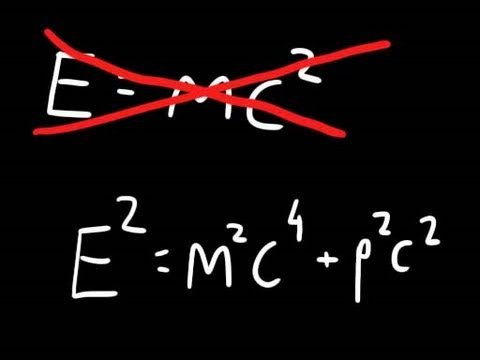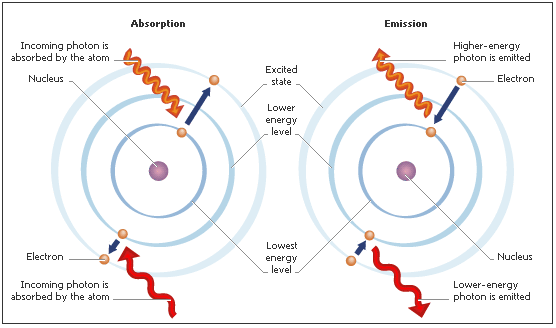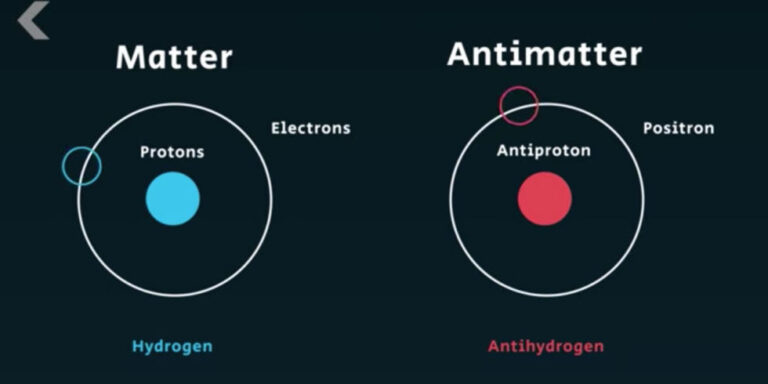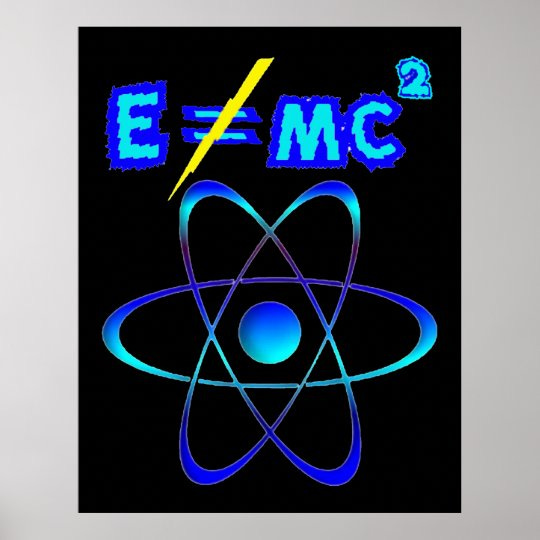4 reasons why E=mc2 is wrong. Einstein made very basic mistakes when interpreting this equation.
Another example of 'The Science' going off on the wrong path, unwilling and unable to correct itself.
Energy = mass (x) the speed of light squared. There are many problems with this equation, which Einstein did not invent, but interpreted as part of his fantasy world of Relativity. Prior to Einstein, various physicists including Isaac Newton, Jules Henri Poincaré, and Olinto De Pretto had proposed the equation. Einstein derived the equation starting from the result of relativistic variation of light energy. He appropriated the equation and its concepts without due attribution – which was a distinctive Einsteinian feature. Why bother acknowledging the work of others? He rarely if ever did.
This short post will briefly describe the basic mistakes within the E=MC2 equation. Many other posts go through the 1905 Special Theory of Relativity (STR) and why it is wrong (you can start with the fact that space is not a vacuum). This post will add to these postulates.
Error #1: Einstein rejects basic kinetics
STR as a theory is at its core, riddled with paradoxes and contradictions (see Herbert Dingle for the clock paradox). So too is Einstein’s interpretation of E=MC2. Einstein took this simple equation and then contorted it with paradoxical ideas of mass and energy.
What does the equation mean?
Einstein’s general interpretation, kE=MC2 defines a relationship between mass and kinetic energy.
1. when a body of mass is accelerated it gains mass and energy
2. when a body of mass is decelerated it loses mass and energy
3. the mass increase/decrease for all matter is proportional to each body’s kinetic energy (relative to a common position of rest for all matter)
What does this actually mean? For Einstein in this interpretation of E=MC2, energy and mass coexist together. The key is the kinetic energy for that body and its mass. If we take an object and accelerate it at a given velocity, the kinetic energy in that velocity will contribute to the overall mass of that body. This is achieved through ‘Joules’ or the measurement of kinetic energy. One Joule has a mass of 10-17 kg. A kilogram of mass will therefore weigh 1017 Joules. In this interpretation a Joule of energy is a quantity of energy, and it is also a quantity of mass. Thus, bodies in motion will possess both Joules of kinetic energy and Joules of kinetic mass. If the body in motion slows down, it will be losing kinetic energy, and Joules. Its mass should therefore decrease as well.
Einstein refused to accept this. He did not believe in deceleration to be a meaningful measurement or concept which can be independently differentiated from an acceleration. He also did not believe that an absolute position of rest could be determined because the mass changes caused by motion, in his view, can never be measured locally. Einstein did not believe in any absolutes as there are anathema to STR. All of these suppositions are simply wrong.
Error #2: Einstein did not understand that photons have mass
Einstein never performed experiments. He was a thought philosopher with mathematical skills. Einstein’s did not understand that the primary meaning of E=MC2 is to define the mass of photons (light) as the truest measure of a mass (the base as it were of mass measurement). Einstein arbitrarily declared, based on his own ego one assumes, that the photon was a particle without mass. This error now permeates all of science. It is absurd. A particle with no mass would have no momentum or motion.
All particles have mass. Photons have a mass of at least 10-50 kg.
In his thought experiments Einstein used Planck’s Constant to make the transformation between the mass of an atom and the energy of a massless photon. By failing to give the photon mass, he was unable to divide Planck’s constant into its component parts h=MλC, namely that the mass of a photon times its wavelength times the speed of light. Rejecting the mass of the photon completely upends the point of E=MC2.
If we admit that the photon has a mass, there is no case where that mass is converted into energy.
· Any mass will have energy that can be measured
· Energy has mass that can be weighed
· Mass and energy by definition cannot be separated into the mass of matter and the energy of photons
We can conclude that mass and energy are the two primary parameters of both matter and photons. One cannot exist without the other. There is no such thing as the long cherished metaphysical idea ‘pure energy’. Back on planet Earth we only have pure ‘mass-energy’.
Error #3: Einstein did not understand anti-matter
Positrons and anti-matter are discussed in some other posts. Positrons were discovered from 1928-1932 and Einstein could never wrap his head around the concept that antimatter and positrons were the latticework of space. Space has never been a ‘vacuum’. Space is full of antimatter and positrons which are real particles with real mass. This means that matter cannot be converted into energy.
How does this work?
· Photons are produced by atoms
· Photons are made from equal pieces of positive matter (proton) and negative matter (electron).
· Neither a proton nor an electron can produce a photon by itself
· A photon is the result of a joint effort between a proton and an electron with each contributing an equal amount of their mass and energy to make the photon
In this process, the creation of a photon (light particle), requires an equal quantity of positive matter (positron) and negative matter (electron). There is no way to convert ordinary matter into photons except in the extremely small quantities produced by atomic radiation.
A core tenet of STR is that there is nothing in space, just a frictionless vacuum. We know this is entirely wrong. You can start with radiation which permeates space and makes speace travel impossible. Radiation has energy and mass. Beyond this the universe is absolutely filled with positive matter (protons) and negative matter (electrons).
The problem for Einstein’s view of mass and energy is that when two particles couple together to form a hydrogen atom for example, they emit a series of photons in a process that begins very much like the annihilation between a positron and electron. Both the proton and the electron will lose equal amounts of mass to the emitted photons as they drop down into the ground state where the process stops and the atom becomes stable. Einstein never supported antimatter nor the real process of photon creation.
Error #4: Einstein never proved relative motion
Einstein failed to understand that all photons travel at C (speed of light which we know can vary through the ether), through the same inertial reference frame (inertial meaning the existing motion of the object) and not just relative to observers. Einstein made the speed of light relative to the observer’s frame. While it is true, as Einstein claimed, that all observers will measure the speed of light to be (c) in any frame, it is not true they measure the same quantity.
Einstein never proved his assumption of ‘relative’ motion, which by itself is wrong. The Doppler effect (measuring the relative motion between a source and observer), means that we can measure the difference between acceleration and deceleration, and between motion and rest. Just because Einstein never bothered to measure absolute rest, does not mean that absolute rest does not exist. For example, there is the absolute motion of photons which Einstein ignored. If photons move with absolute motion, then the motion of matter must also be absolute. Einstein should have known that:
· M=E/C2 (to rearrange the equation) which defines a body of matter’s excess mass associated with its absolute motion through rest
· When a body of matter is accelerated to any velocity (v) relative to this frame, its mass increases with its kinetic energy KE=MC2
· At a velocity of about 86% of the speed of light, a body’s mass is doubled with a kinetic mass that is equal to its rest mass
The above can only occur within a single frame of reference for all matter. We know that matter gains mass when it is accelerated, and it also gives up that mass when it is decelerated. All photons and all electrons in a given reference frame have identical masses.
Therefore, a precious tenet of Einstein’s theorems and STR, that there are no absolutes, is fundamentally wrong. The most basic mistake was made by Einstein, namely, by using the Doppler effect he concluded that all motion itself was intrinsically relative. Einstein failed to believe in a fixed frame that connected all forms of motion. However, with a more careful look at the Doppler effect, one must conclude that a common absolute motion for all photons must exist.
Bottom Line
That E=MC2 is wrong will never be taught at school or shown in the science propaganda. Despite the rather basic mistakes of Einstein, ‘The Science’ has enshrined this equation to demi-god status. Yet it is utterly incorrect and leads real science down the wrong path.
This equation also has nothing much to do with ‘nuclear fusion’ or fission, which is the oft-cited ‘proof’ of the equation. Nuclear reactions do not support the theorem for the reasons outlined in this post. As well the ‘mass’ used in the equation must exist. Only existing matter can create matter. Einstein’s fantasy world rejected this, believing that matter can magically be called upon to appear. This alone negates the equation, but the postulates in this post add further weight to why the equation is of little use.
E=MC2 is another classic example of Scientism.







